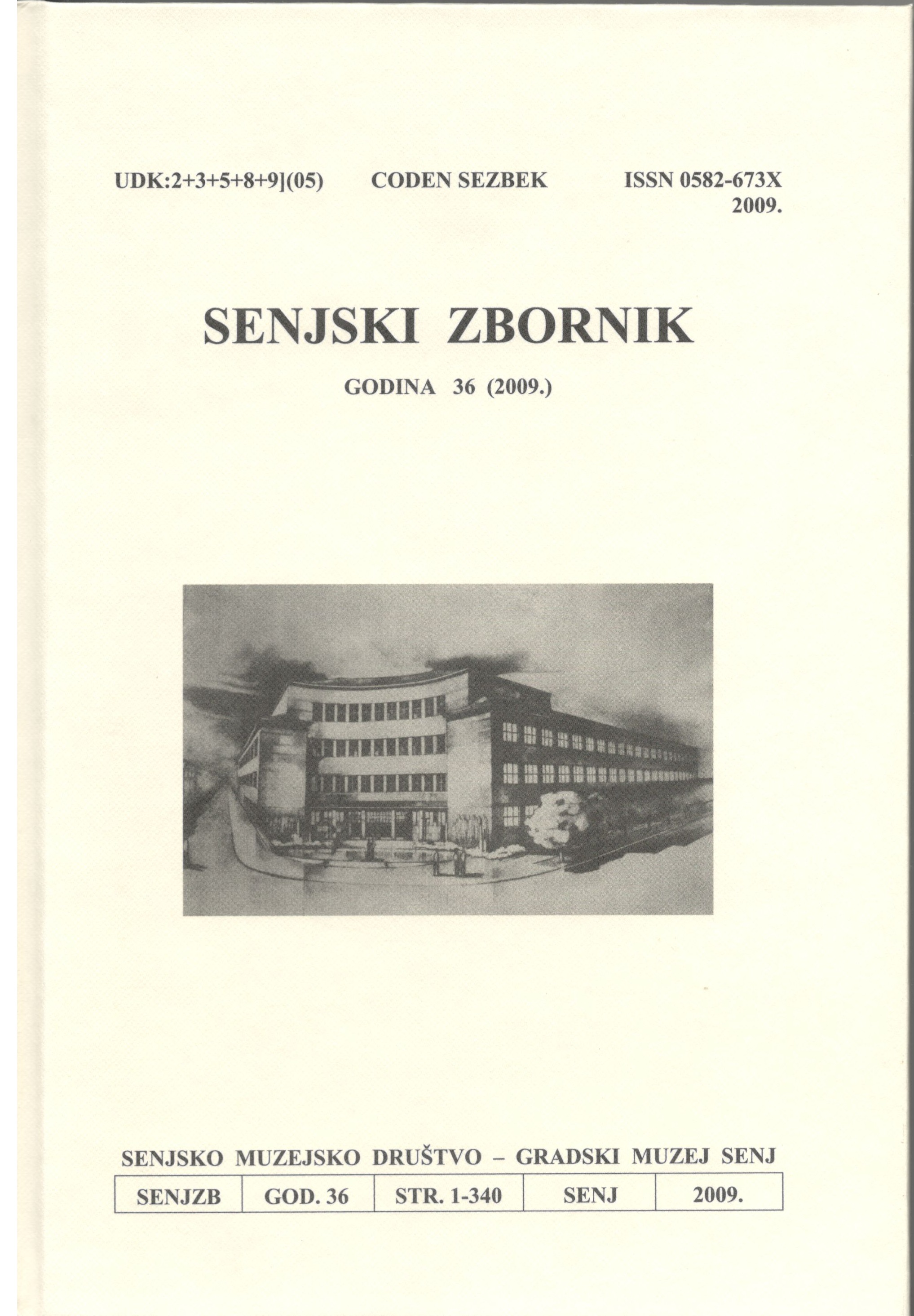Vojna krajina i reformski procesi u ranom novom vijeku, s posebnim osvrtom na Primorsku krajinu i grad Senj
The Military border and the reform process in the early modern age, with particular reference to the Coastal krajina and Town of Senj
Author(s): Anna Maria GrünfelderSubject(s): Military history, 16th Century, 17th Century
Published by: Senjsko muzejsko društvo i Gradski muzej Senj
Keywords: Military Border; town of Senj; coastal region; Early Modern Age;
Summary/Abstract: Turkish forces before the "gates" of the Habsburg"s world was a great "driving force" for the reform of the constitutional institutions and technical modernization, in order not only to increase the ruler"s power, but also as an effective defence of the Empire. The impact of the Turkish invasion on the emergence of the political-state and financial instruments of the defence of the Holy Roman Empire of the German nationalities and Habsburg lands has been thoroughly researched. However, the impact of these developments on the Military Border and the development of its defence system, has been ignored, and not only in the standard works of the Austrian military historians about the Military Border. Therefore, the author explores how the developmental processes that were at work in the interior of the Habsburg countries reflected the Military Border: The developmental processes, were primarily focused on the reform for the better functioning of the institutions of the Empire -administration, law, financial system and the armies, starting with Emperor Maximillian I, "the Last Knight" (1469-1519). The author believes, the term "modernization" can be applied to them within the meaning of "the expansion of civilization" (Alfred Heuss). The author established that Maximillian"s reforms of the institutions of the Holy Roman Empire were also reflected in the Military Border. This resulted with the close connection of this area with the countries of Inner Austria. In the Military Border a centralized management system was introduced, which resulted in the "alienation" of the"Krajina" (region) of the Ban"s Croatia and the militarization of the area, which would contribute to the formation of a separate identity of a "Krajišnik" (frontiersman). However, the author due to her available archival sources, in this text, is limited to the beginnings of the reform process, which would be suspended in the 17th century due to the diversion of interest of the Habsburg rulers towards the Thirty Years War. After its end, the interrupted reforms would be reconnected, but not without visible traces of the previous delays. The continuation in the reforms will be the subject of a separate investigation.. Resistance developments, provided structure in the Military Border, officials who oppose the professionalisation of themselves and frontiersmen, because they lived off the war. Protestant reformation and the requirements of the Protestant orders for religious freedom for all Protestants were the instrument of peer pressure on the rulers. In Krajina the Reformation was not affirmed. There effective ideas about the great act of the Crusades and the release of the "Christian heaven" from the Turkish yoke were powerful. Under the sign of the "battle against the enemies of Christianity" the Uskoks led their own war against the Venetian ships and subjects. Their explanation was even more convincing, as the Republic of Venice, one of the first "secularized" countries of Europe, due to their national interests secretly allied with "the enemy of Christianity" and in Europe it led an "anti-cleric" policy. Due to its opposition to the Roman Pope the Venetian Republic had been punished with the most severe canonical penalty, interdict, the prohibition to exercise Catholic religious ceremonies. However the promoters of grand ideas of liberation no longer had a driving force, because of Inner Austrian conflicts between the classes and rulers and they could not count on outside help. The idea failed and because of that, as with every emerging "liberation action" it turned into a predatory campaign. This was reflected in the welfare of the frontiersmen of the Croatian and Slavonian Military Border. The author believes that we should deny the widespread topos that the frontiersmen were left at the mercy and were sacrificed for safety the Inner Austrian countries. Serbian historian Gligor Stanojević built his own views about Senj"s Uskoks upon the hypothesis that they, like all of frontiersmen before and afterward "the Uskoks saga, they had to risk their heads, their lives for the defence of "foreign interests" and that the "Uskok battle" was a struggle for identity and their human dignity". On the contrary, sources suggest the claim that the countries of Inner Austria bore great financial, material and human burdens. The true weight of this burden can be understood only when one keeps in mind that financial and material assistance for manorial estates had to be provided by farmers and craftsmen, and urban residents. For every allocation for Military Border the Habsburg rulers had to combat with estates, and those, mainly Protestants, and every consent they charged with confessional concession. And the Habsburg rulers as their opponents, the Protestant classes of Inner Austrian countries fought not only for power and dominance, but also for survival and security. The term "dignity", with which Gligor Stanojevic ahistoricaly characterized Senj"s Uskoks, can be translated as "the fundamental requirements of human existence." In this light, the objectives of the Court and court counsellors in distant Graz were almost identical with those of the coastal population. The two sides are notat opposite positions, nor were the frontiersmen just sacrificial lambs for foreigners needs: the frontiersmen defended the Military Border not only for foreign interests, but also for themselves and their communities and families.
Journal: Senjski zbornik - prilozi za geografiju, etnologiju, gospodarstvo, povijest i kulturu
- Issue Year: 36/2009
- Issue No: 1
- Page Range: 91-122
- Page Count: 32
- Language: English, Croatian

